Related Research Articles

A wetland is a distinct ecosystem that is flooded or saturated by water, either permanently for years or decades or seasonally for a shorter periods. Flooding results in oxygen-free anoxic processes prevailing, especially in the soils. The primary factor that distinguishes wetlands from terrestrial land forms or water bodies is the characteristic vegetation of aquatic plants, adapted to the unique anoxic hydric soils. Wetlands are considered among the most biologically diverse of all ecosystems, serving as home to a wide range of plant and animal species. Methods for assessing wetland functions, wetland ecological health, and general wetland condition have been developed for many regions of the world. These methods have contributed to wetland conservation partly by raising public awareness of the functions some wetlands provide. Constructed wetlands are designed and built to treat municipal and industrial wastewater as well as to divert stormwater runoff. Constructed wetlands may also play a role in water-sensitive urban design.

A grassland is an area where the vegetation is dominated by grasses (Poaceae). However, sedge (Cyperaceae) and rush (Juncaceae) can also be found along with variable proportions of legumes, like clover, and other herbs. Grasslands occur naturally on all continents except Antarctica and are found in most ecoregions of the Earth. Furthermore, grasslands are one of the largest biomes on Earth and dominate the landscape worldwide. There are different types of grasslands: natural grasslands, semi-natural grasslands, and agricultural grasslands. They cover 31–69% of the Earth's land area.
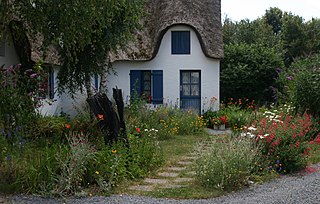
A wildlife garden is an environment created with the purpose to serve as a sustainable haven for surrounding wildlife. Wildlife gardens contain a variety of habitats that cater to native and local plants, birds, amphibians, reptiles, insects, mammals and so on, and are meant to sustain locally native flora and fauna. Other names this type of gardening goes by can vary, prominent ones being habitat, ecology, and conservation gardening.

A salt marsh, saltmarsh or salting, also known as a coastal salt marsh or a tidal marsh, is a coastal ecosystem in the upper coastal intertidal zone between land and open saltwater or brackish water that is regularly flooded by the tides. It is dominated by dense stands of salt-tolerant plants such as herbs, grasses, or low shrubs. These plants are terrestrial in origin and are essential to the stability of the salt marsh in trapping and binding sediments. Salt marshes play a large role in the aquatic food web and the delivery of nutrients to coastal waters. They also support terrestrial animals and provide coastal protection.

A meadow is an open habitat or field, vegetated by grasses, herbs, and other non-woody plants. Trees or shrubs may sparsely populate meadows, as long as these areas maintain an open character. Meadows can occur naturally under favourable conditions, but are often artificially created from cleared shrub or woodland for the production of hay, fodder, or livestock. Meadow habitats, as a group, are characterized as "semi-natural grasslands", meaning that they are largely composed of species native to the region, with only limited human intervention.
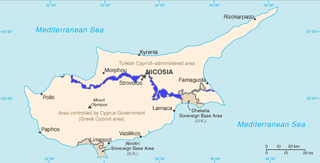
A buffer zone is a neutral zonal area that lies between two or more bodies of land, usually pertaining to countries. Depending on the type of buffer zone, it may serve to separate regions or conjoin them. Common types of buffer zones are demilitarized zones, border zones and certain restrictive easement zones and green belts. Such zones may be comprised by a sovereign state, forming a buffer state.
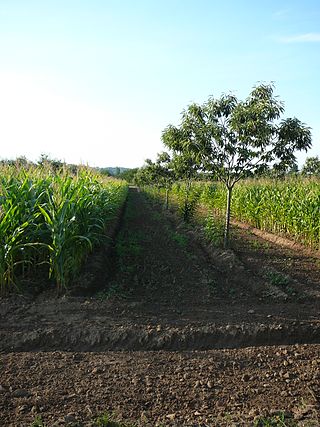
Agroforestry is a land use management system in which combinations of trees are grown around or among crops or pasture. Agroforestry combines agricultural and forestry technologies to create more diverse, productive, profitable, healthy, and sustainable land-use systems. Benefits include increasing farm profitability, reduced soil erosion, creating wildlife habitat, managing animal waste, increased biodiversity, improved soil structure, and carbon sequestration.

A secondary forest is a forest or woodland area which has regenerated through largely natural processes after human-caused disturbances, such as timber harvest or agriculture clearing, or equivalently disruptive natural phenomena. It is distinguished from an old-growth forest, which has not recently undergone such disruption, and complex early seral forest, as well as third-growth forests that result from harvest in second growth forests. Secondary forest regrowing after timber harvest differs from forest regrowing after natural disturbances such as fire, insect infestation, or windthrow because the dead trees remain to provide nutrients, structure, and water retention after natural disturbances. Secondary forests are notably different from primary forests in their composition and biodiversity; however, they may still be helpful in providing habitat for native species, preserving watersheds, and restoring connectivity between ecosystems.

Ecological restoration is the process of assisting the recovery of an ecosystem that has been degraded, damaged, or destroyed. It is distinct from conservation in that it attempts to retroactively repair already damaged ecosystems rather than take preventative measures. Ecological restoration can reverse biodiversity loss, combat climate change, and support local economies. The United Nations named 2021-2030 the Decade on Ecosystem Restoration.

A riparian zone or riparian area is the interface between land and a river or stream. In some regions, the terms riparian woodland, riparian forest, riparian buffer zone, riparian corridor, and riparian strip are used to characterize a riparian zone. The word riparian is derived from Latin ripa, meaning "river bank".
Ecological facilitation or probiosis describes species interactions that benefit at least one of the participants and cause harm to neither. Facilitations can be categorized as mutualisms, in which both species benefit, or commensalisms, in which one species benefits and the other is unaffected. This article addresses both the mechanisms of facilitation and the increasing information available concerning the impacts of facilitation on community ecology.

Prairie restoration is a conservation effort to restore prairie lands that were destroyed due to industrial, agricultural, commercial, or residential development. The primary aim is to return areas and ecosystems to their previous state before their depletion.

Revegetation is the process of replanting and rebuilding the soil of disturbed land. This may be a natural process produced by plant colonization and succession, manmade rewilding projects, accelerated process designed to repair damage to a landscape due to wildfire, mining, flood, or other cause. Originally the process was simply one of applying seed and fertilizer to disturbed lands, usually grasses or clover. The fibrous root network of grasses is useful for short-term erosion control, particularly on sloping ground. Establishing long-term plant communities requires forethought as to appropriate species for the climate, size of stock required, and impact of replanted vegetation on local fauna. The motivations behind revegetation are diverse, answering needs that are both technical and aesthetic, but it is usually erosion prevention that is the primary reason. Revegetation helps prevent soil erosion, enhances the ability of the soil to absorb more water in significant rain events, and in conjunction reduces turbidity dramatically in adjoining bodies of water. Revegetation also aids protection of engineered grades and other earthworks.

Municipal solid waste (MSW) – more commonly known as trash or garbage – consists of everyday items people use and then throw away, such as product packaging, grass clippings, furniture, clothing, bottles, food scraps and papers. In 2018, Americans generated about 265.3 million tonnes of waste. In the United States, landfills are regulated by the Environmental Protection Agency (EPA) and the states' environmental agencies. Municipal solid waste landfills (MSWLF) are required to be designed to protect the environment from contaminants that may be present in the solid waste stream.

Riparian-zone restoration is the ecological restoration of riparian-zonehabitats of streams, rivers, springs, lakes, floodplains, and other hydrologic ecologies. A riparian zone or riparian area is the interface between land and a river or stream. Riparian is also the proper nomenclature for one of the fifteen terrestrial biomes of the earth; the habitats of plant and animal communities along the margins and river banks are called riparian vegetation, characterized by aquatic plants and animals that favor them. Riparian zones are significant in ecology, environmental management, and civil engineering because of their role in soil conservation, their habitat biodiversity, and the influence they have on fauna and aquatic ecosystems, including grassland, woodland, wetland or sub-surface features such as water tables. In some regions the terms riparian woodland, riparian forest, riparian buffer zone, or riparian strip are used to characterize a riparian zone.

Forest restoration is defined as “actions to re-instate ecological processes, which accelerate recovery of forest structure, ecological functioning and biodiversity levels towards those typical of climax forest” i.e. the end-stage of natural forest succession. Climax forests are relatively stable ecosystems that have developed the maximum biomass, structural complexity and species diversity that are possible within the limits imposed by climate and soil and without continued disturbance from humans. Climax forest is therefore the target ecosystem, which defines the ultimate aim of forest restoration. Since climate is a major factor that determines climax forest composition, global climate change may result in changing restoration aims. Additionally, the potential impacts of climate change on restoration goals must be taken into account, as changes in temperature and precipitation patterns may alter the composition and distribution of climax forests.
Garden waste, or green waste dumping is the act of discarding or depositing garden waste somewhere it does not belong.
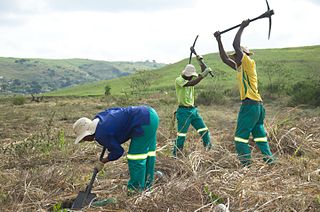
The Buffelsdraai Community Reforestation Project was initiated in 2008 to alleviate climate change impacts associated with hosting elements of the 2010 FIFA World Cup in Durban. The proposed carbon offset was to be achieved through the planting of more than 500 000 indigenous trees within the buffer zone of the Buffelsdraai Landfill Site. Restoring the forest ecosystem was identified as a way of "absorbing event-related greenhouse gas emissions while enhancing the capacity of people and biodiversity to adapt to the inevitable effects of climate change".
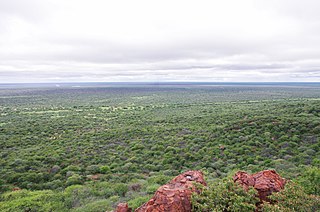
Woody plant encroachment is a natural phenomenon characterised by the increase in density of woody plants, bushes and shrubs, at the expense of the herbaceous layer, grasses and forbs. It predominantly occurs in grasslands, savannas and woodlands and can cause biome shifts from open grasslands and savannas to closed woodlands. The term bush encroachment refers to the expansion of native plants and not the spread of alien invasive species. It is thus defined by plant density, not species. Bush encroachment is often considered an ecological regime shift and can be a symptom of land degradation. The phenomenon is observed across different ecosystems and with different characteristics and intensities globally.

A wildflower strip is a section of land set aside to grow wildflowers. These can be at the edge of a field to mitigate against agricultural intensification and monoculture; along road medians and verges; or in parkland or other open spaces such as the Coronation Meadows. Such strips provide an attractive amenity and can also improve biodiversity, conserving birds, insects and other wildlife.
References
- 1 2 3 4 5 6 7 8 9 Camerini, G., & Groppali, R. (2014). Landfill restoration and biodiversity: A case of study in Northern Italy. Waste Management & Research, 32(8), 782–790. doi : 10.1177/0734242X14545372
- 1 2 Pang, C.-C., Lo, W.-F., Yan, R. W.-M., & Hau, B. C.-H. (2020). Plant community composition on landfill sites after multiple years of ecological restoration. Landscape Research, 45(4), 458–469. doi : 10.1080/01426397.2019.1674266
- 1 2 3 4 5 6 7 8 9 Wong, J. T., Chen, X., Mo, W., Man, Y., Ng, C. W., & Wong, M. (2016). Restoration of Plant and Animal Communities in a Sanitary Landfill: A 10‐year Case Study in Hong Kong. Land Degradation & Development, 27(3), 490–499. doi : 10.1002/ldr.2402
- 1 2 3 Vaverková, M. D., Radziemska, M., Bartoň, S., Cerdà, A., & Koda, E. (2018). The use of vegetation as a natural strategy for landfill restoration. Land Degradation & Development, 29(10), 3674–3680. doi : 10.1002/ldr.3119
- ↑ Ashwood, F., Butt, K. R., Doick, K. J., & Vanguelova, E. I. (2018). Effects of composted green waste on soil quality and tree growth on a reclaimed landfill site. European Journal of Soil Biology, 87, 46–52. doi : 10.1016/j.ejsobi.2018.05.003
- ↑ Chan, Y. S. G., Chu, L. M., & Wong, M. H. (1997). Influence of landfill factors on plants and soil fauna—An ecological perspective. Environmental Pollution, 97(1–2), 39–44. doi : 10.1016/S0269-7491(97)00082-1
- ↑ Bryce, S. A., Hughes, R. M., & Kaufmann, P. R. (2002). Development of a Bird Integrity Index: Using Bird Assemblages as Indicators of Riparian Condition. Environmental Management, 30(2), 294–310. doi : 10.1007/s00267-002-2702-y
- ↑ Lomov, B., Keith, D. A., Britton, D. R., & Hochuli, D. F. (2006). Are butterflies and moths useful indicators for restoration monitoring? A pilot study in Sydney’s Cumberland Plain Woodland. Ecological Management & Restoration, 7(3), 204–210. doi : 10.1111/j.1442-8903.2006.00310.x
- 1 2 3 4 5 De Mei, M., & Di Mauro, M. (2006). Study of some characteristic Mediterranean vegetation species best suited for renaturalization of terminal-phase municipal solid waste (MSW) landfills in Puglia (Southern Italy). Acta Oecologica, 30(1), 78–87. doi : 10.1016/j.actao.2006.02.001
- 1 2 3 4 5 6 Tarrant, S., Ollerton, J., Rahman, M. L., Tarrant, J., & McCollin, D. (2013). Grassland Restoration on Landfill Sites in the East Midlands, United Kingdom: An Evaluation of Floral Resources and Pollinating Insects: Flowers and Pollinating Insects on Restored Landfills. Restoration Ecology, 21(5), 560–568. doi : 10.1111/j.1526-100X.2012.00942.x
- ↑ Dixon, K. W. (2009). Pollination and Restoration. Science, 325(5940), 571–573. doi : 10.1126/science.1176295
- 1 2 3 4 Héroux, M., & Martin, D. (2020). FREDERIC-BACK PARK, MONTREAL, CANADA: HOW 40 MILLION TONNES OF SOLID WASTE SUPPORT A PUBLIC PARK. Detritus, 11, 68–80. doi : 10.31025/2611-4135/2020.13972